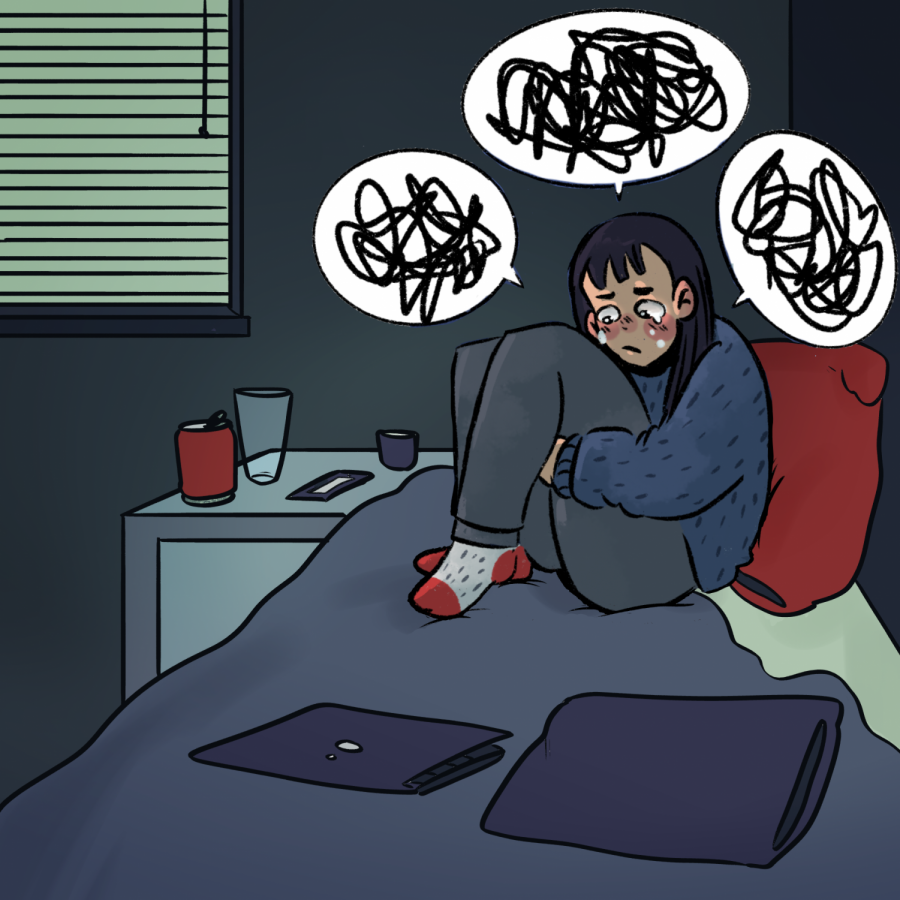Running in the dark: Former runners say Texas didn’t treat mental health injuries same as physical injuries
April 19, 2021
TW: discussions of mental illness, including depression, anxiety and eating disorders
Editor’s Note: This article first appeared in the April 16 issue of The Daily Texan.
Thomas Hinojosa loved the thrill of running –– the feeling of his feet pounding on the pavement, legs burning with every stride and arms driving him down the final stretch. During his senior year of high school, the San Antonio runner was No.7 in Texas in the 1600 meter.
But shortly after making his collegiate debut at the 2018 Texas Invitational, that thrill disappeared: Hinojosa contracted mono and was forced to stop running for months.
“There was a time I was on my own,” Hinojosa said. “I would go through the routine of seeing the academic advisor and go to study hall but outside of that I didn’t see the team.”
The viral illness dangerously enlarged his spleen, and out of fear of his spleen rupturing, Hinojosa was advised to rest until it returned to its normal size.
There was no muscling through recovery, and over time, this took a toll on his mental health. Not running for months was frustrating. As the days went on, Hinojosa felt months of training slipping out of his legs.
“I was pretty separated, and that was a big part,” Hinojosa said. “I felt lonely, and it put me into a pretty bad headspace.”
Hinojosa isn’t alone. Several former Texas track and field runners report a lack of mental health resources for athletes recovering from injuries and illness and an unsupportive culture. Hinojosa is one of the first to speak out, shedding light on how distance runners are afraid of seeking help for their mental health, and how this fear is ingrained in Texas’s win-at-all-costs culture.
“Mental health is definitely something that’s important with athletes who are injured because it’s a struggle,” said Eric Kroon, a former Texas distance runner. “You have all of these ambitions to be a great runner, and you can’t do it anymore. You’re struggling to readjust, basically recalibrate to a new kind of life.”
But former athletes say the Texas program did not adequately address their students’ mental health concerns. Jane, a former Texas track athlete who requested anonymity due to a waiver she signed when she quit the team junior year, described struggling athletes who were left in the dark.
“There were girls on the team with eating disorders that I don’t believe were being addressed or supported in a fashion that was equitable or ethical,” Jane said. “It was kind of an unsaid thing that was not being addressed.”
Alex, another anonymous source and former athlete who left her junior year, described athletes being prescribed medicine for anxiety or depression rather than getting help from mental health counselors, almost as soon as they showed signs of a troubled emotional state. She said most athletes never spoke to a sports psychiatrist, and Doe said when she did, she did not benefit from it.
“I noticed there are a lot of people on either anxiety or depression drugs on the team, which for me, was a warning sign. I was one of them,” Alex said. “I think that was a symptom of something bigger, because I think their first resort was to prescribe you something.”
Texas Athletics did not respond to multiple requests for comment from The Daily Texan.
Hinojosa departed Texas’ distance team three months after his bout with mono and didn’t run for two years afterwards. He is one of several former athletes that said they still struggle to cope with the mental health struggles that arose from their time on the team.
Other distance runners said they also couldn’t bear to run for a long time once they left and described feelings of heartbreak and failure.
“The emphasis is too much on physical rehab, rather than mental rehab,” Kroon said. “I would like to see that balance shifted a little bit towards the mental side of things. I think that starts with having a group of counselors who are more approachable, and who have better relationships with the teammates, so they feel more comfortable talking to them.”












